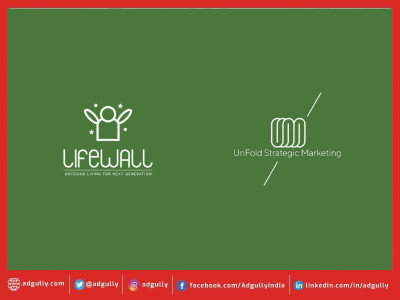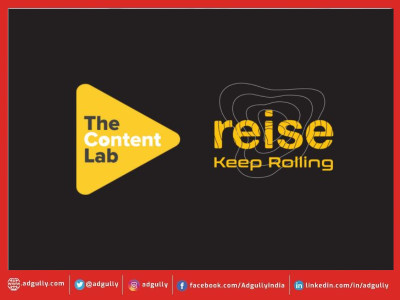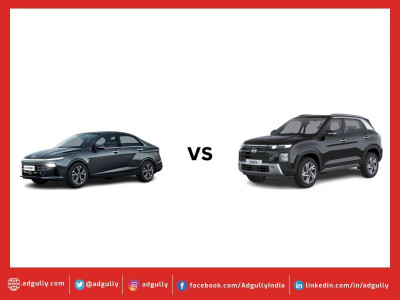Evolving Marketing Trends in the age of OTT and Digital 2019
Arun Gupta, Found and CEO, MoMagic writes about the tech-driven marketing and evolving trends of OTT in 2019
Marketing is business activity of promoting and branding products or services. In addition to traditional ways, businesses are increasingly resorting to new media to reachout and market a wider and more taregtted TG. The current ecosystem is driving marketers to adopt unconventional and new ways to achieve their end objective. Marketing is steadiliy being re-defined.
The emergence of digital (social) media as the cornerstone of marketing landscape has brought a tectonic shift with technological advancement such as big data, machine learning, and natural language processing (NLP). The business of increasingly tracking consumer behaviour – and the increased emphasis on deep user insights they produce to go a layer deep into the consumers’ psyche for marketing and advertising is the gift of tech driven marketing. The over-the-top (OTT) platforms that have managed grab the eye balls , especially of the lucrative urban youth segment, is also setting in benchmarks and tactics for marketing campaigns.
Its now all about very cutomised,monitored and measured messaging and communication to cater to these platforms with the kind of window of attention these platforms facilitate to any brands or service offerings etc.
Artificial Intelligence in Digital Marketing
Like in many other sectors, artificial intelligence is breaking new grounds in the marketing domain as well. Whether it is a multinational corporation or a start-up, this tech enabler has caught every one’s fancy, and for good reason. Utilising artificial intelligence for digital marketing campaigns have yielded promising results. Artificial intelligence can break down data and help marketers easily understand and predict the buying behaviours and decisions of the target customers. In other words, AI/Data Intelligence helps the brand understand its audience better and brings in improved user experience that translates into better retention. For marketers , Artificial intelligence is all about narrowing the guesswork and create more effective marketing strategies with data-driven analysis. AI-powered algorithms also automate several repetitive tasks which can help increase productivity and save both time and money for the businesses. Technology in a way empowers decision-making and helps create better-performing content.
Businesses implementing AI-manoeuvred digital marketing strategies has helped,reach out to the right audience with better targeted deals. Prominent examples of use of artificial intelligence are chatbots, personalised product recommendations, better shopping experiences, and creating better advertisements and user-friendly websites. Using a chatbot program to reach out to your customers or respond to their queries can take care of the most common questions of customers. The AI enables these bots to engage in human-like conversations that improve customer experience, something coffee giant Starbucks is making efficient use of to supplement human employees. Bots here are even capable of understanding complex orders: it allows you to order “double tall mocha nonfat extra hot no whip” coffee or a simple latte.
Devising Effective Campaigns Supported by Data Science and Big Data
Market research, the traditional approach and an ffective tool that generated employment as well as helped companies to devise strategies has with time and with tremendous technological advancement, evolved into AI , ML etc …..essentially minimizing the dependence on human brain. The error with human intervention managing million and billions of data points also gets miminized with analytics becoming more tech /alogrithm driven . and that is also one key reason for concepts like big data analytics catching up fast. The sheer scale of data and the need of deep user contexual insights has made tech compulsory for marketers and businesses vying for a share in this highly-competitive market. Big data refers to the study and application of big, complex datasets, both structured and unstructured, which traditional data-processing applications will not be able to deal with. The insights generated help to take better business decisions and strategic moves.
One example of big data in our daily use is that of cookies – the files appear in the websites that you open and collect information about customers’ activities as they browse the internet, and generate personalized insights in the process. The campaigns devised based on the insights have been found to be able to yield better results than aggregative advertising of the past. It has also helped in pricing products better – companies usually price products and services based on basic information such as competitor pricing, product cost, perceived value of the product from the customer and demand. Big data allows using other factors to decide the right price, such as the data from completed deals, incentives and performance-based data which add dimension to the existing datasets and enables better decision making, keeping in mind the larger picture. Big data considers every small and big aspects of data, particularly in the business-to-business (B2B) sector.
Marketing in OTT in 2019
According to a MoMAGIC survey earlier this year, despite the domination of television in Indian households, OTT platforms are going to be more popular in coming days – 55 per cent of the respondents in the target age group of 18t to 40 years clearly preferred OTT platforms over the conventional DTH ones. With more channels joining OTT platforms, it can be assumed safely that more and more people will follow the suit. Therefore, marketers now have to devise suitable plan for both their content and execution. In fact, savvy marketers are allocating a part of the existing marketing budget for these platforms in order to catch more eyeballs. Adding OTT platform to an advertising campaign or media strategy is steadily becoming a norm to increase the reach to a larger number of desired TG audience.. An additional benefit the OTT platforms offer is that since these platforms utilise AI and big data for better user experience and sending recommendations, marketers can leverage that insight for their own product/service offerings etc.
However, marketers have to also gear up for potential challenges this medium may throw up, including:
- Measurement: Setting a standard is one of the key challenges in OTT advertising as it does not follow the measurement standards of conventional TV advertising. Besides, its measurement cannot be confined to the digital display advertising. The IAB (Interactive Advertising Bureau) Tech Lab Media Rating Council, in June 2018, issued guidelines on how impressions must be counted, accounting for the buffering and cache functions, and several other factors which marketers should understand before venturing into OTT marketing.
- Technology requirements: Since different OTT platforms run on a wide variety of back-end technologies, the demand for an advertiser to adapt their video ads to the technology used can vary with the platform. For example, if an advertiser creates a video ad for Hulu, a popular OTT platform in the US but yet to come to India, it may not necessarily work on Roku TV in the same format.
- The OTT audience is young and usually very impatient – they want to get back to what they are watching as soon as possible. This poses a risk to a video ad – it may very well become an unpleasant interruption instead of a marketing tool.
Interestingly, if one looks at the type of brands that attract most viewers on older and popular channels like YouTube, a trend might interest marketers and the industry alike. According to afaqs, the top three brands that attracted maximum attention on YouTube in March 2019 were Kia Motors India with the catchphrase ‘Magical Inspirations; Stunning Designs’, the anti-bacterial paint of Asian Paints, and Samsung Galaxy A. In April 2019, the beginning of fiscal year 2019-2020, the top three brands were Samsung Convertible refrigerator, OnePlus Seven, and Philips trimmer featuring Indian skipper Virat Kohli. All the brands had a targeted message but lacked in a socially-relevant one – with an exception of Max Fashion’s ‘Behen, Kuch Bhi Pehen!’ that was launched a week before International Women’s Day. One may also question what is socially relevant. For example, the phrase ‘hamara bajaj’ evokes was not just that of an add of a scooter but connected way beyond. It is a fortunate stroke of serendipity that 2019 marks 30 years of the iconic Bajaj advertisement that depicted the then ‘buland Bharat ki buland tasvir’ and represented the dream of a commoner – that of owning a personal vehicle, a plebeian scooter. Over the years, Bajaj diversified and focused on bikes but the appeal of that advert, a part of the overall marketing plan, remains till date. Its appeal to the target audience was both effective and timely and that should be the key takeaway for marketers as they venture into a new year and with marketing becoming more technology savvy

















Share
Facebook
YouTube
Tweet
Twitter
LinkedIn